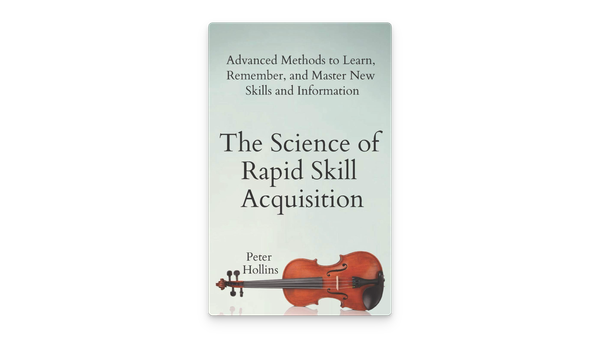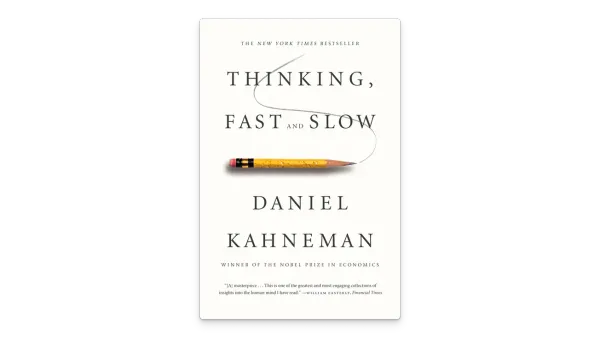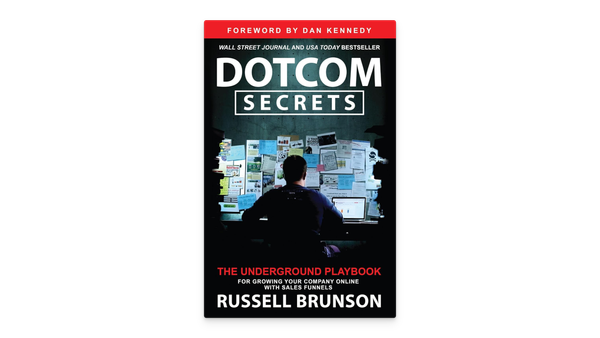Use Purpose to Transform Your Workplace
Is keeping pace with the future of work incompatible with using purpose to guide the organization? Unilever is stretching its well-known commitment to purpose for a new and daunting challenge—the transformation of its workforce of more than 149,000 employees. Its Future of Work program involves purpose-focused workshops for all employees that are designed to help them choose their future jobs, whether with the company or elsewhere. Many organizations assume that workforce transformations require painful layoffs. Unilever believes that such an approach represents a missed opportunity and is ultimately counterproductive. It has pledged to undertake a workforce transformation guided by its commitment to decency and sustainability.
••• With more than 149,000 employees, Unilever confronts every issue related to the changing nature of work. It invests in AI and robotics for its factories, negotiates with unions, hires gig workers, and is reshaping its workforce for digital commerce. Many organizations facing challenges similar to Unilever’s assume that workforce transformations require painfully reducing the number of employees—perhaps by shifting some into consulting relationships—or taking other steps at workers’ expense, such as cutting hours or benefits.
Unilever believes that such transactional approaches overlook opportunities and are ultimately counterproductive. That doesn’t mean the company is willing to trade profitability for workforce security. Its vision is to deliver to investors financial returns in the top third of its industry, and it competes in the heavily automated and digitized commerce value chain. But an important lesson from the tenure of Paul Polman, the CEO who led Unilever from 2009 to 2019, is that _purpose_ can help reduce tensions in the workforce and create optimum conditions for growth. The company believes that a focus on purpose will allow it to adapt faster and more profitably in the future than the old change-management model would. This article describes Unilever’s Future of Work program and its attempts to remain competitive while staying true to its mission of “making sustainable living commonplace”—including for its employees. Most of the tactics involved will be useful even for companies that don’t share Unilever’s perspective, although we hope to persuade some skeptics that an “all-in” approach is best. ## Doubling Down on Purpose Unilever’s expansion of the scope of purpose from sustainable brands to sustainable workforce relationships was inspired by several beliefs about the evolving nature of work. ### The speed of change in workplace skills requires that companies move to “higher ground” with employees. In offices and factories alike, digital skills must be updated or renewed at a much quicker pace than was necessary with prior technologies. Because keeping employee skills relevant will always be a work in progress, Unilever aims to hire people with a learning aptitude and a connection to the company’s values. Purpose is arguably the highest ground possible for aligning a workforce, and Unilever bets that its commitment to purpose will give rise to stable, productive employee relationships and a workforce capable of continual change. ### Purpose will help attract younger talent. Surveys consistently show that the younger generations value purpose at work. In one LinkedIn survey 86% of young employees reported being willing to give ground on title and compensation to work at a business aligned with their values or mission, compared with just 9% of Baby Boomers. Moreover, workers of all ages hold dear the capacity to achieve their personal goals and career expectations. ### Purpose can guide hard decisions. Younger generations now also demand greater consistency across a company and will loudly protest when they perceive its actions as inappropriate. The recent walkouts over military contracts at big tech firms are an example. Unilever believes that embedding purpose in workforce management fosters innovative approaches that will prepare it well for its most challenging moments. When faced with tough staffing and HR problems, executives can return to company values for guidance, charting a course that reduces the likelihood of blowback or discontent. ## Connecting Purpose and Work Unilever’s commitment to extend sustainability to its talent strategies is ongoing, and the company has made some missteps along the way. But it has identified several key lessons. ### Purpose starts with the individual. It may sound like a paradox, but creating a shared purpose requires that individuals first understand their own raison d’être. That makes workforce management critically different from other purpose-driven initiatives such as building a brand portfolio, which is mostly determined top-down. Employees at all levels undertake important actions to execute on the brand promise to consumers, but senior leaders decide what brands to field. By contrast, Unilever believes, embedding meaning in workforce renewal requires employees to decide what each wants in the future. For example, it would be unproductive to encourage skills renewal for an employee whose career ambitions lie well outside the company, because she won’t invest to keep pace. Moreover, dictating change from above can lead to resistance. To ensure that employees never feel like manipulated widgets, Unilever minimizes the use of common terms such as “reskilling” and “upskilling.” Starting with an employee’s purpose—in a holistic sense, going beyond just title and compensation—gets the conversation off on the right foot and encourages employees’ accountability for their own development. ### Purpose requires interacting with individuals at scale. Unilever first sought alignment between individual and company meaning back in 2009, when it started the Unilever Leadership Development Program, which helped more than 400 senior executives discover their own purpose and use that experience to guide their work. (The practice is now widespread among senior leaders at many companies.) The program was so successful that Unilever expanded it to all levels of the organization. The original four-day workshop for senior leaders was not feasible on a large scale, so the company has rolled out a one-day version that can reach all its employees in their countries and native languages. By the summer of 2021 almost 60,000 of them (40% of the workforce) had “discovered their purpose” through these workshops. Unilever is committed to reaching everyone—even hourly staffers. Today many new employees find that members of their team introduce themselves by sharing their purpose. At the workshops employees develop individualized “future-fit plans” that chart their desired path over the next 18 months—even to destinations outside Unilever—and the important skill-development steps it requires. These workshops and frequent check-ins help Unilever listen better to its employees, which it believes will lead to increased engagement, well-being, and commitment to drive the company’s strategy. The workshops don’t sugarcoat the future, however. For example, someone who doesn’t want to be employed in a highly automated factory can work openly, with the company’s assistance, on a path to a better fit—either in a different part of the organization or in a career that takes him away from Unilever. The future-fit plan becomes the basis for the employee’s engagement with Unilever’s skills platform. Being open to employee career paths makes tools such as talent marketplaces, cross-firm employee swaps, and portable skills certification more valuable. The program is bearing fruit. In 2020, 92% of those who had attended a discover-your-purpose workshop reported having jobs that inspire them to go the extra mile, compared with only 33% of those who had not attended one. ### Purpose guides all worker arrangements, even contracting. As companies shift work away from 40 hours a week and break it into discrete tasks, gig and remote models provide critical inputs. Unilever’s first forays into the gig economy were not particularly sophisticated. Many managers needed to be pushed to even consider non-full-time employees for tasks, and few had any experience with gig-work platforms such as Catalant and Momlancers. Unilever also needed to adapt its internal procedures: The 60-day-plus payment terms typical among consumer packaged goods companies are a bit slow for gig workers. But the company is persevering. It has identified more than 80,000 tasks it may need done over the next five years, which will be performed by a combination of full-time employees, gig workers, contractors, and those working flexibly. From its early experiments Unilever learned quickly that top freelance talent can be choosy about employers, so companies need to stand out. Here its commitment to sustainability has proved important. A gig worker who sees Unilever as aligned with her values is more likely to bid on one of its projects and return for another. Although she won’t be attending a discover-your-purpose workshop, the company believes that creating a connection with her is also important. Indeed, Unilever is progressing toward a common hiring funnel for all workers, whether gig or full-time. In 2020, 92% of Unilever employees who had attended a discover-your-purpose workshop reported having jobs that inspire them to go the extra mile. But purpose goes both ways. Unilever believes that the exploitation of gig workers violates its social mission and values. It is also bad for business, because poorly paid workers aren’t good consumers of Unilever’s brands. And it can lead to blowback—as happened when Google employees joined protests and walkouts over perceived inequalities for the company’s TVC (temp, vendor, contractor) pool. Although part-time work is more contractual than traditional employment is, Unilever wants purpose to be at the heart of the contract in a new model of employment that combines flexibility and security. The company’s boldest initiative to date is U-Work, codeveloped with trade unions and policy makers in the United Kingdom. Employees who opt into U-Work are paid a monthly retainer when they commit to work a specified number of weeks a year on short-term assignments for Unilever. They are further compensated while on assignments and also receive benefits, pension contributions, paid holidays during work spells, and stipends they can spend on learning activities. The hope is that U-Work and other programs will help the company retain talent—particularly parents and other caregivers—and thereby increase the diversity of its teams. Given the success of U-Work in the UK, Unilever is rolling out similar models in other countries. ### Purpose guides workforce reductions. Unilever will face its hardest decisions when fast-paced change brings about the inevitable layoffs required to remain competitive and deliver top financial returns. New technologies can provide new forms of work for some but not all employees. Unilever believes that purpose shines through the most in these tough moments. Across its nearly 100-year history the company has seen a fair number of difficult plant closures. With the shared goal of “not doing this the old way,” and 21% of its employees based in Europe (where trade unions are generally more powerful than in other parts of the world), Unilever first teamed up with its European Works Council (which represents its European employees) to co-create a framework for the Future of Work in March 2019. They developed a joint approach to future-fit skills building, new employment models, and skills-enhancing employability programs and allocated funding to support the initiative. The principles of the agreement have since been applied worldwide through Unilever’s Responsible Transformation program. To be sure, the success of this collaboration required courage from labor leaders. They own the program as much as Unilever executives do. But Unilever’s CEO, Alan Jope, has continually and publicly reinforced his leadership team’s commitment to seeing the collaboration succeed. Unilever’s goal is to ensure that 80% to 100% of workers displaced by automation can obtain a new internal job or a comparable external position or opt for early retirement. So far the company has managed to stay at the very top of that range. Consider the recent case of a plant in Italy. In line with Future of Work principles, the local manager began co-creating a plan with government, unions, and leading universities to prevent a total closure. Together they developed an innovative plan for converting the plant into a recycling center, guaranteeing jobs for all the employees. Following layoffs and closures, Unilever works to track employees who leave (providing they agree to be tracked) to determine whether their new pay is keeping pace with the old. And the company is pursuing innovative partnerships to help these workers land other positions with comparable compensation. For instance, it is engaged in exploratory work with Walmart to identify engaging career pathways across the two organizations. Unilever is doing all this because the “old way”—us-versus-them power dynamics and labor strife—is incompatible with purpose and thus a recipe for long-term value destruction. The company emphasizes to local managers that investing money early in a workforce transition will reduce later costs by even larger sums, and that the process will be accelerated, not delayed, by sharing difficult information with employees and labor reps early, rather than in one big bang after a decision has been made. This approach may be scary, but Unilever’s experience thus far confirms that the best outcomes from closures and layoffs have been those most closely aligned with the company’s purpose. ### . . . President John F. Kennedy once described the United States’ commitment to space exploration with a story about the Irish writer Frank O’Connor. O’Connor and his childhood friends would commit themselves to getting over a wall that seemed too high by first throwing their caps over it. Unilever faces an existential challenge in the coming years: how to be a purpose-driven company while transitioning its workers to a time when some of their skills may be obsolete. Its leaders are humble enough to know that some bets about the company’s future won’t pan out, and some actions to put sustainability at the center of workforce decisions may prove ineffectual or even backfire. But Unilever’s cap is now on the other side of the wall. The company believes that doubling down on its purpose will help build a workforce capable of overcoming whatever obstacles the future holds.




